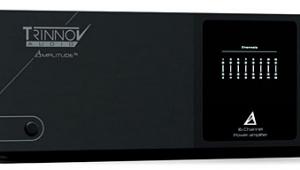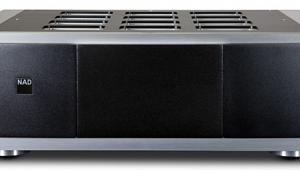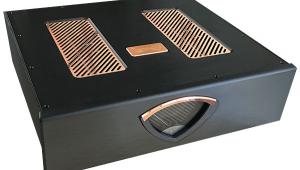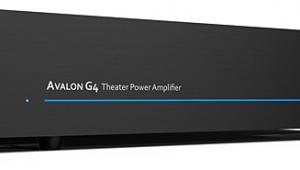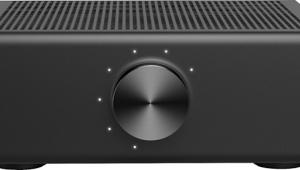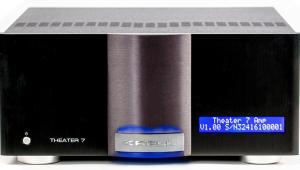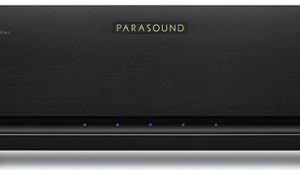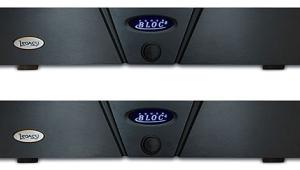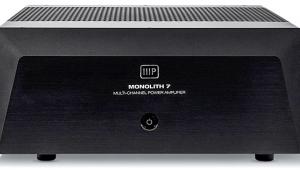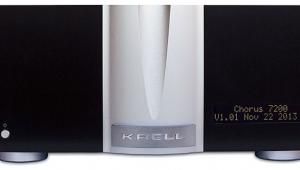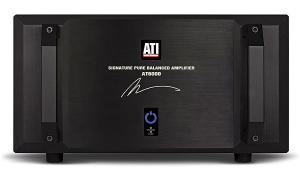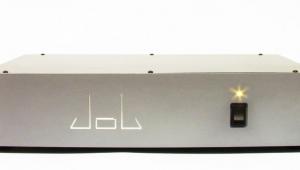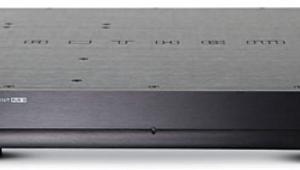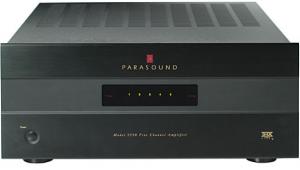Bryston Powerpack 300 Power Amplifier Page 2
It was a simple task to install the Powerpack 300s in each of my two home theater rooms. In my large room, one Powerpack 300 replaced each of the five Bel Canto EVO 2 amplifiers. Except for adjusting the relative subwoofer level, the installation required no other changes or re-calibrations. In my small room, I replaced the Pass X-150 driving the front three channels with three Powerpack 300s. Two more Powerpacks replaced the rear amplifier, an Edge Electronics AV-3. This system also employed a Lexicon MC-12 V.4 pre-pro with built-in room EQ. In both systems, I used balanced XLR inputs for the front three channels and unbalanced RCA inputs for the two rear channels.
The Bryston Sound
How should a good amplifier sound? The perfect amplifier would be a "straight wire with gain" with no additions or subtractions to the original signal. Since we do not live in a perfect world, all amplifiers, regardless of design or price, have some amount of sonic personality that forces them to deviate from absolute neutrality. When forced to describe the Powerpack 300's deviance from sonic invisibility, I would say it's slightly harmonically dry and very matter-of-fact.
As you might expect given its output rating, the Powerpack 300 amplifier has prodigious amounts of power and seemingly unlimited dynamic ability. Unlike its smaller sibling, the Powerpack 120, the 300 never exhibited any strain, even when driving the difficult impedance load presented by the Genesis 6.1 loudspeaker system. The Powerpack 300s' sound not only did not change during dynamic peaks, but exhibited exemplary dynamic contrast and control even at moderate levels. During some movies, such as Pearl Harbor, I found it necessary to turn up the sound during the dialog sections and back down during the explosive action scenes because the dynamic range between loud and soft was so wide.
An amplifier's ability to deliver a source's inner detail makes a big difference in how involving the sound is. The Powerpack 300 delivers all the subtleties of dialog and music with aplomb. On my own symphonic recordings, the Powerpack 300 had no trouble resolving the inner musical details of the first violins as well as the background sounds of the concert hall itself.
The Bryston Powerpack 300 doesn't qualify as a romantic-sounding amplifier, but its upper frequencies have balanced neutrality that walks a fine line between brazen and reticent. Overly sibilant or peaky recordings and movies sound that way, while well-recorded sources come through without any additional euphony.
Moving down into the midrange frequencies, the Bryston 300's harmonic presentation delivers little in the way of additional warmth or richness. Well-made recordings and soundtracks benefit from this harmonic presentation, while edgy or hard recordings don't. Compared with my current reference amplifiers, the Bel Canto EVO-2 and Pass Labs X-3, the Bryston Powerpack 300 has no more electronic noise, but it does have slightly more electronic grain. This ever-so-slightly grainy quality can be heard in the spaces and inner texture on recordings, and it accounts for some of the Powerpack 300s more matter-of-fact sonic character.
Bass rendition down to 50 Hz (where my subwoofers take over) had excellent definition and detail with ample dynamic punch and authority. But since the amp doesn't add any extra harmonic character or complexity to sources, less-than-ideal recordings and movies can sound a bit lean in their lower frequencies. This leanness also makes it more challenging to mate a set of Powerpack 300s with excessively warm subwoofers. The Lexicon MC-12 EQ program solved this mating issue elegantly, but lesser processors don't have this EQ option. A first-class subwoofer, like the Earthquake SuperNova 15 MK-IV, blended easily with the Powerpack 300s, but a looser, less precise subwoofer might be a more challenging fit.
The Powerpack 300's ability to re-create three dimensionality or depth seemed limited to recordings that have extremely convincing depth cues. On most recordings and soundtracks, the Powerpack 300's lateral imaging was precise, but its three-dimensional imaging was not as definitive or specific as with some amplifiers I've experienced, such as the Pass X-150 or Bel Canto EVO-2.
Both the Bel Canto EVO-2 and Pass Labs X-3 possess noticeably warmer, more euphonic harmonic presentations that deliver a more tube-like, slightly less-electronic sonic picture. They also have more liquid midranges with lower levels of electronic noise and inner grain. While they both are approximately the same price per channel (if you use the EVO-2 as a 2-channel amp) they are much larger physically. The EVO-2 runs very cool and can be placed in fairly tight spaces, but the Pass needs good air circulation. The ergonomically elegant Powerpack 300 fits into many situations where neither of these two fine amplifiers could work as comfortably.
A 300-to-1 Shot
Ten years ago, if someone had told me it was possible to make a 300-watt amplifier small enough and efficient enough to fit onto the back of a moderately sized speaker, yet with sonics capable of challenging any amplifier regardless of size or price, I would have been highly skeptical. The Powerpack 300 happens to be just such an amplifier. With prodigious output, superior dynamic abilities, and excellent resolving powers, this harmonically unromantic amplifier should be a fine choice for many home theater and studio applications. Given Bryston's stellar reputation for service and reliability, I'm confident that 20 years from now every Powerpack 300 amplifier ever made will still be working perfectly.
Highs and Lows
Highs
Prodigious output, superior dynamics, and excellent resolving power
The best warranty in the industry
Form factor permits mounting near—or even on—the speaker
Lows
Cool, matter-of-fact sound may not appeal to all audiophiles
Pricey for a 5- or 7-channel system
- Log in or register to post comments
